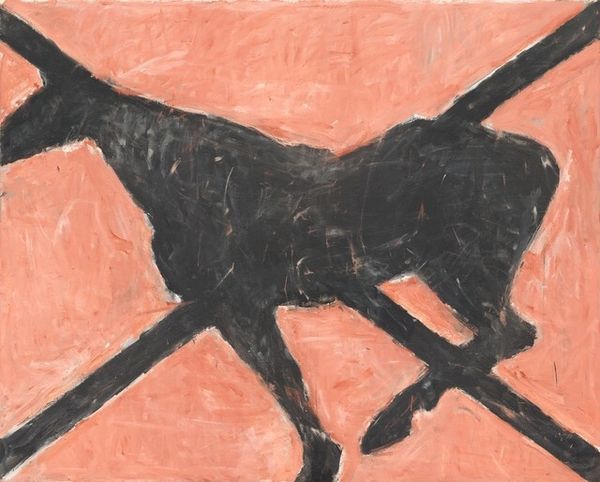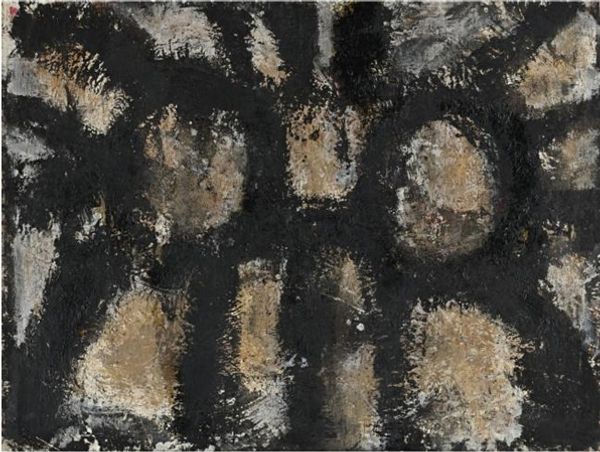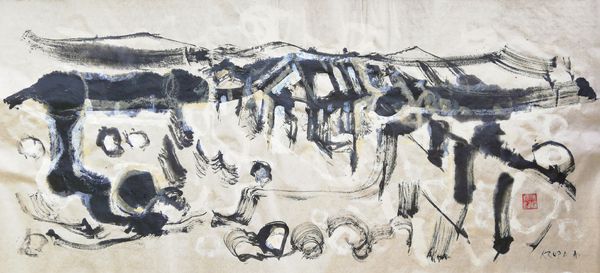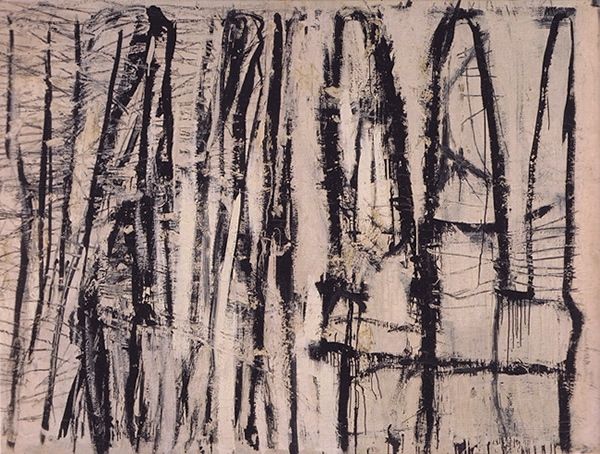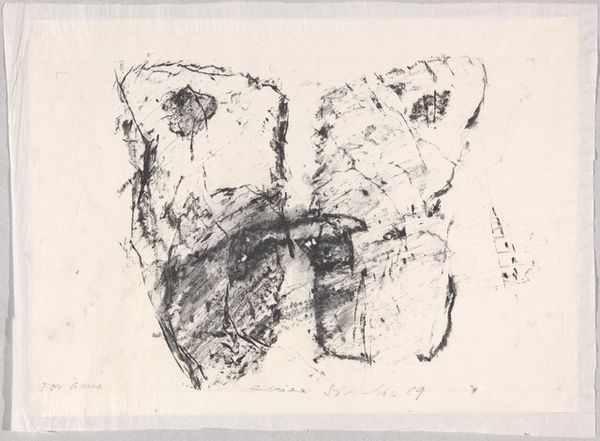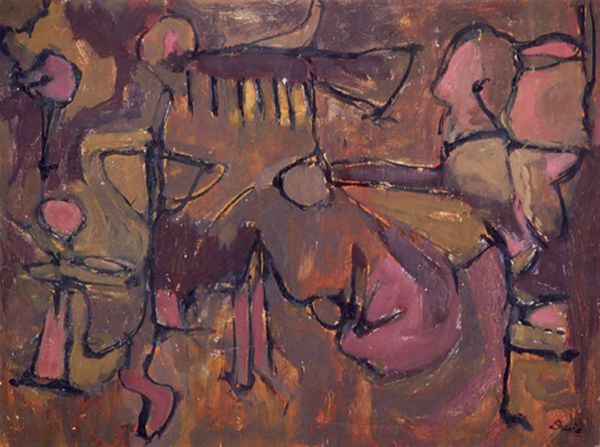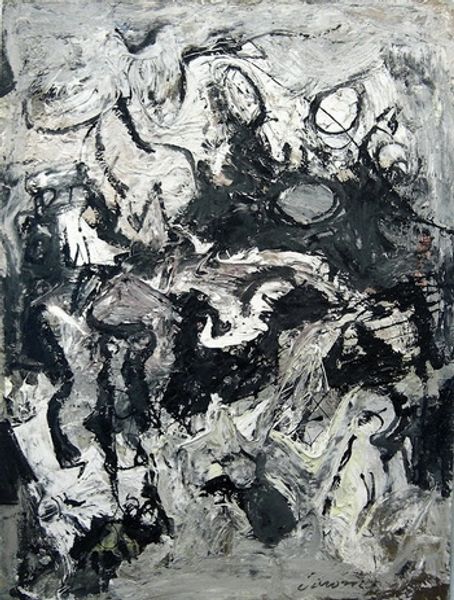
painting, oil-paint, gestural-painting, impasto
#
abstract-expressionism
#
abstract expressionism
#
abstract painting
#
painting
#
oil-paint
#
textured
#
form
#
gestural-painting
#
impasto
#
black-mountain-college
#
paint stroke
#
matter-painting
#
abstraction
#
line
#
abstract art
Copyright: Cy Twombly,Fair Use
Curator: Cy Twombly’s "Min-Oe" created in 1951, an oil painting on canvas. It’s a relatively early piece from his body of work. What’s your immediate response to this image? Editor: Stark and evocative, certainly. The black ground emphasizes the raw, almost frantic, gestures of white. It feels confrontational, almost aggressive in its simplicity. Curator: It’s the duality, I think, that’s compelling. Notice the push and pull of the ground. See how the contrast isolates line as force. There is raw immediacy to the composition with this interplay. Editor: And within that interplay, I find a sort of visual scream, or perhaps a raw articulation of internal turmoil. Remember that the piece emerged not long after World War II. One can interpret this as a subconscious grappling with the societal scars inflicted by violence and ideological conflict during those years. Curator: True. Although Twombly always resisted overt symbolic interpretations, it’s undeniable that his early works reflected the angst of his generation. However, he rarely acknowledged any direct societal commentary. Editor: Precisely, the strength is that ambivalence. Instead of explicitly representing a narrative, “Min-Oe" mirrors it. Curator: Indeed, the painting doesn't impose meaning, rather it allows a dialogue with a post-war state of uncertainty. Editor: An uncertainty that speaks loudly even now, as our world seems again precariously balanced on similar social-political themes. Thank you for bringing this into greater focus. Curator: And thank you for the framework; it reframes our sense of the image. It is always stimulating to engage with "Min-Oe," because of its raw material presence.
Comments
No comments
Be the first to comment and join the conversation on the ultimate creative platform.
